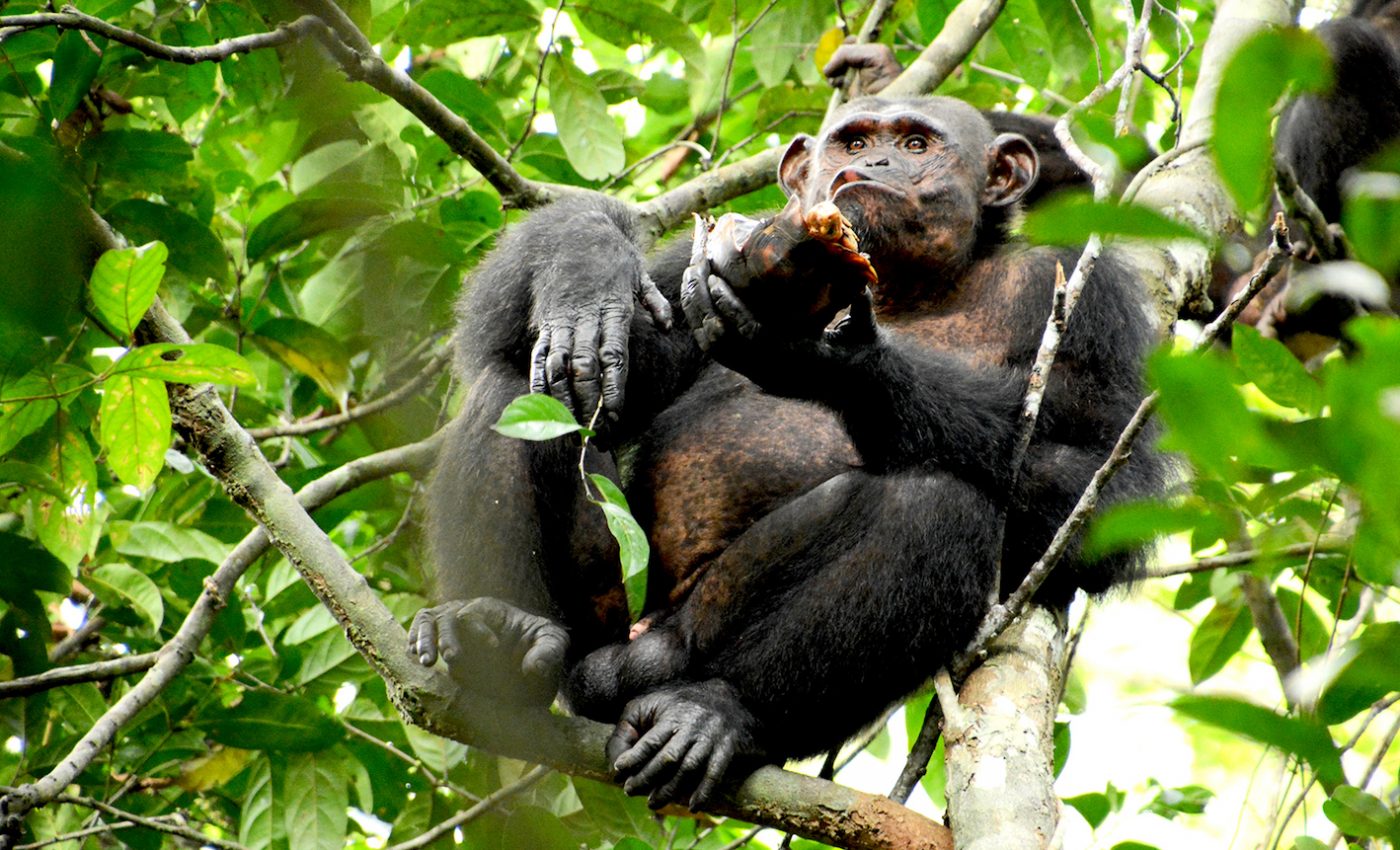
Chimpanzees use a unique technique to eat tortoises
A new study led by the Max Planck Institute for Evolutionary Anthropology has revealed that wild chimpanzees crack tortoise shells open on tree trunks to access the meat inside. The researchers observed this behavior by ten different chimpanzees during the dry season, which is a time when other preferred foods were abundant.
“We have known for decades that chimpanzees feed on meat from a variety of animal species, but until now the consumption of reptiles has not been observed,” said study co-author and primatologist Tobias Deschner. “What is particularly interesting is that they use a percussive technique that they normally employ to open hard-shelled fruits to gain access to meat of an animal that is almost inaccessible for any other predator.”
The study was focused on chimpanzees in the newly habituated Rekambo community. According to study first author and cognitive scientist Simone Pika, the younger chimps and females often needed help to open the shells. “They then regularly handed the tortoise over to a stronger male who cracked the tortoise’s shell open and shared the meat with all other individuals present,” said Pika.
The researchers were surprised to witness one instance where an adult male cracked a tortoise and ate half of it while sitting up in a tree alone. He then stored the remainder of the meal in a tree fork. The next morning, he came back to finish off the leftovers for breakfast.
“This indicates that chimpanzees may plan for the future,” said Pika. “The ability to plan for a future need, such as for instance hunger, has so far only been shown in non-human animals in experimental and/or captive settings. Many scholars still believe that future-oriented cognition is a uniquely human ability. Our findings thus suggest that even after decades of research, we have not yet grasped the full complexity of chimpanzees’ intelligence and flexibility.”
“Wild chimpanzee behavior has been studied now for more than 50 years and at more than ten long-term field sites all across tropical Africa,” said Deschner. “It is fascinating that we can still discover completely new facets of the behavioral repertoire of this species as soon as we start studying a new population.”
Pika described non-human primate field observations as a window into the history and evolution of humans.”To prevent this window from closing once and for all, we need to do whatever we can to secure the survival of these fascinating animals in their natural habitats across Africa,” added Deschner.
The study is published in the journal Scientific Reports.
—
By Chrissy Sexton, Earth.com Staff Writer
Image Credit: Erwan Theleste













